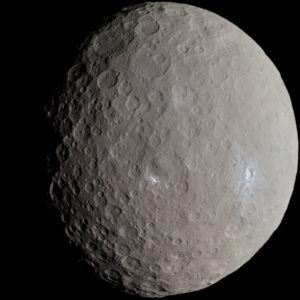Between Jupiter and Mars, lies the asteroid belt. It’s a large collection of rocks of various sizes that orbits the Sun together with the dwarf planet Ceres.

Ceres isn’t much of a planet. It’s a good deal smaller than our moon.
Current theory holds that the asteroid belt is left over rubble from the creation of our solar system. Too much gravity from Jupiter prevented the successful creation of a proper planet, so all we got was Ceres and a bunch of unused building material.
However, there is an older theory that tells quite another story. This theory harks back to the ancient Greeks, and was the accepted theory until the 20th century. In this theory, a planet called Phaeton was destroyed in a squabble with Jupiter.
The discoveries of Ceres and the asteroid belt by 19th century astronomers were taken as proof that Phaeton had indeed existed. Ceres was either a large part of Phaeton or it was its moon.
This older theory fits well with the hypothetical rogue planet. On its way towards the inner solar system, it blew up Phaeton, scared Mars, and zapped Earth.
This Post Has 0 Comments